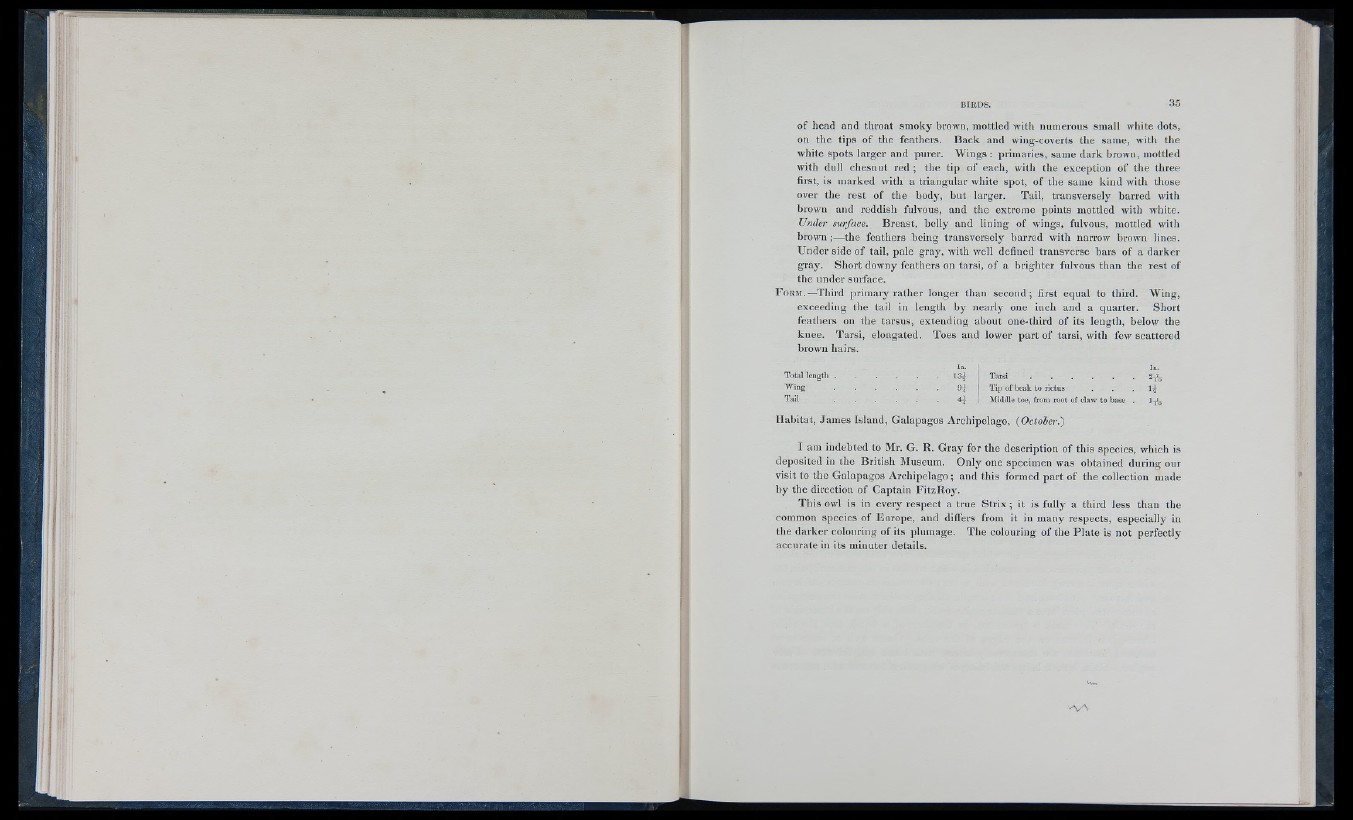
of head and throat smoky brown, mottled with numerous small white dots,
on the tips of the feathers. Back and wing-coverts the same, with the
white spots larger and purer. Wings : primaries, same dark brown, mottled
with dull cliesnut red ; the tip of each, with tlie exception of the three
first, is marked with a triangular wliite spot, of the same kind with those
over the rest of the body, but larger. Tail, transversely barred with
brown and reddish fulvous, and the extreme points mottled with white.
Under surface. Breast, belly and lining of wings, fulvous, mottled with
brown;—the feathers being transversely barred with narrow brown lines.
Under side of tail, pale gray, with well defined transverse bars of a darker
gray. Short downy feathers on tarsi, of a brighter fulvous than the rest of
the under surface.
F o r m .—Third primary rather longer than second; first equal to third. Wing,
exceeding the tail in length by nearly one inch and a quarter. Short
feathers on the tarsus, extending about one-third of its length, below the
knee. Tarsi, elongated. Toes and lower part of tarsi, with few scattered
brown hairs.
Total l e n g th .......................................................... 13^
Wing 9^
Tail 47
Tarsi . . . . ,
Tip of beak to rictus
Middle toe, from root of cUiw to I
2tV
Uu
v
Habitat, James Island, Galapagos Archipelago, {October.)
I am indebted to Mr. G. R. Gray for the description of this species, which is
deposited in the British Museum. Only one specimen was obtained during our
visit to the Galapagos Archipelago; and this formed part of the collection made
by the direction of Captain FitzRoy.
This owl is in every respect a true Strix; it is fully a third less than the
common species of Europe, and differs from it in many respects, especially in
the darker colouring of its plumage. The colouring of the Plate is not perfectly
accurate in its minuter details.